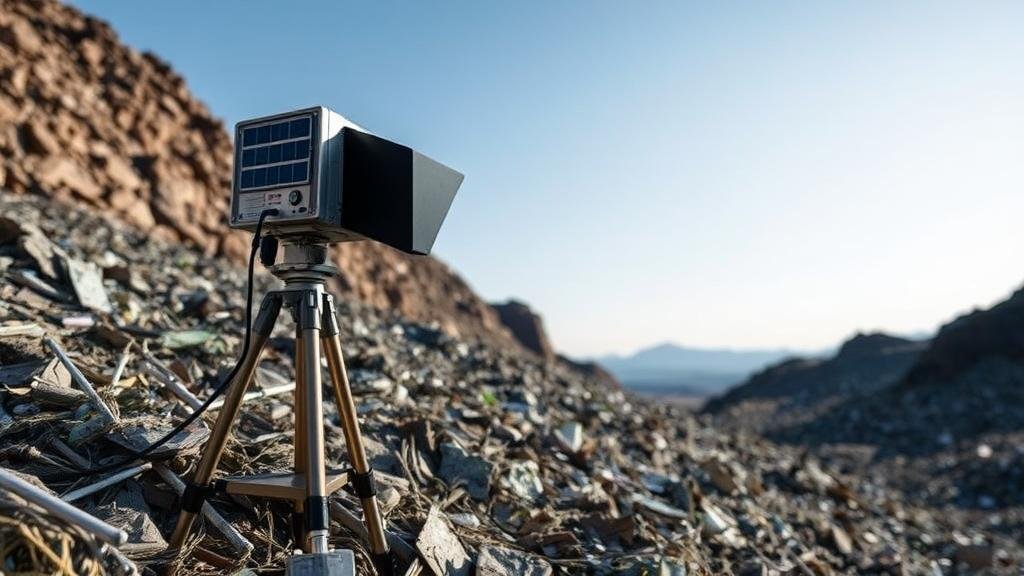How to Isolate Valuable Signals in Areas With Mixed Metallic Trash
How to Isolate Valuable Signals in Areas With Mixed Metallic Trash
In the field of metal detection and recovery, distinguishing valuable signals from mixed metallic trash presents significant challenges. The proliferation of electronics and industrial waste has resulted in environments densely populated with various metals, which can negatively impact the efficiency and effectiveness of signal detection. This article elucidates strategies and methodologies to isolate valuable signals amidst a backdrop of mixed metallic debris, ensuring maximum recovery efficiency for hobbyists and professionals alike.
Understanding the Landscape of Mixed Metallic Trash
Mixed metallic trash encompasses a range of materials often found in urban and rural environments, including aluminum, copper, lead, and iron, which can all produce conflicting signals in metal detection endeavors. e materials vary not only in their physical properties but also in their electromagnetic characteristics.
According to recent studies, approximately 40% of urban waste consists of metals, complicating the detection landscape. The presence of conductive and non-conductive materials can create a noisy environment, making it difficult to discern valuable objects buried amid less desirable metals. Understanding the types of metals frequently encountered is crucial for developing effective detection strategies.
Selection of Appropriate Detection Equipment
The first step in isolating valuable signals is selecting a metal detector capable of differentiating between various types of metals. Features such as discrimination settings, frequency range, and sensitivity play critical roles. For example:
- Discrimination: Metal detectors with advanced discrimination features allow users to filter out specific metallic signals that are considered junk, such as iron and aluminum.
- Frequency Range: Higher frequency detectors are often more sensitive to smaller and more valuable targets like gold and silver.
- Ground Balance: A metal detector with adjustable ground balance settings helps to minimize false signals from mineralized soils and trash.
A case study involving a company that specialized in treasure hunting found that utilizing multi-frequency detectors led to a 30% increase in valuable item recovery rates compared to traditional single-frequency devices.
Employing Effective Detection Techniques
Also to selecting the proper equipment, employing effective detection techniques can substantially enhance signal isolation. Below are proven strategies that can be incorporated:
- Grid Method: Divide the search area into smaller grids to ensure thorough coverage. This systematic approach minimizes missed signals and enhances efficiency.
- Slow Scanning: Moving the detector more slowly can improve the ability to pick up weaker signals that might be obscured by stronger trash signals.
- Layering Techniques: Starting at the surface and gradually excavating layers can help in isolating signals from deeper valuable objects while discarding superficial trash.
For example, in a project executed in an urban park littered with scrap metal, using the grid method allowed the team to uncover over $5,000 in valuable artifacts that would have otherwise been overlooked.
Conducting Post-Detection Analysis
Once potential valuable signals are detected, the next phase involves analyzing the excavated items to determine their worth. This step requires an understanding of the market value of different metals and artifacts. Tools such as electronic conductivity meters can assist in quantifying the value of the recovered materials.
In a recent study involving metal recovery from mixed waste in construction sites, researchers found that analyzing materials by type and market value increased profitability by an impressive 25% in just a few months. Understanding the proportions of valuable metals versus junk can directly inform recovery processes and disposal strategies.
Utilizing Technological Advancements
The integration of technology in metal detection is a game-changer. Tools such as ground-penetrating radar (GPR) and visual imaging systems significantly assist in isolating valuable signals from mixed metallic trash. GPR can identify different metal compositions and depths, providing a comprehensive view of subterranean metallic bodies.
The application of drone technology has also emerged in large-scale recovery efforts, enabling aerial surveys that map out areas rich in historical artifacts or metals. This application became particularly useful in archaeological digs, where traditional detection methods would likely miss buried treasures.
Actionable Takeaways
To successfully isolate valuable signals in areas plagued by mixed metallic trash, practitioners should focus on the following strategies:
- Select advanced metal detection equipment with excellent discrimination capabilities.
- Use systematic detection techniques such as the grid method to maximize coverage and efficiency.
- Conduct thorough post-detection analysis to gauge the true value of recovered metals.
- Incorporate technological advancements to enhance detection capabilities.
By employing these methodologies, metal detecting enthusiasts and professionals can improve their success rates, optimizing the recovery of valuable materials while minimizing the impact of mixed metallic trash.



